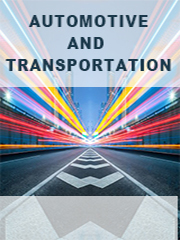Report overview
An automotive seat consists of a large number of parts and mechanisms. Major parts of the seat are frame, padding, seat pan, head restraints system, reclining mechanism with lever, trim (seat cover), and suspension. Automotive seat recliner is a key component in automotive seating systems. It provides comfort for neck, spine, and foot while driving. High-quality steel or magnesium is used for producing recliners so that they can withstand strong forces during accidents.
This report aims to provide a comprehensive presentation of the global market for Automotive Seat Recliners, with both quantitative and qualitative analysis, to help readers develop business/growth strategies, assess the market competitive situation, analyze their position in the current marketplace, and make informed business decisions regarding Automotive Seat Recliners. This report contains market size and forecasts of Automotive Seat Recliners in global, including the following market information:
Global Automotive Seat Recliners Market Revenue, 2018-2023, 2024-2029, ($ millions)
Global Automotive Seat Recliners Market Sales, 2018-2023, 2024-2029, (M Units)
Global top five Automotive Seat Recliners companies in 2022 (%)
The global Automotive Seat Recliners market was valued at US$ 3660.7 million in 2022 and is projected to reach US$ 4670.3 million by 2029, at a CAGR of 3.5% during the forecast period. The influence of COVID-19 and the Russia-Ukraine War were considered while estimating market sizes.
The automotive seat recliners market is very concentrated market; key players include Adient, Faurecia, Lear Corporation, Toyota Boshoku, Magna International, Hyundai Transys, DAS Corporation, Fisher Dynamics, HAPM, Jiangsu Lile Auto Parts, etc; Adient is the largest player with over 30% market share, and the revenue of top ten manufacturers accounts about 85% of the total revenue in 2018. The high-end products mainly come from Europe and North America. The automotive seat recliners are classified into the manual seat recliners and power seat recliners according to the product type. As of 2019, manual seat recliners segment Occupied the largest market contributing more than 70% of the total market share, while power seat recliners seen a faster growth as a result of power seat adoption and better seating comfort demand.
We surveyed the Automotive Seat Recliners manufacturers, suppliers, distributors and industry experts on this industry, involving the sales, revenue, demand, price change, product type, recent development and plan, industry trends, drivers, challenges, obstacles, and potential risks.
Total Market by Segment:
Global Automotive Seat Recliners Market, by Type, 2018-2023, 2024-2029 ($ Millions) & (M Units)
Global Automotive Seat Recliners Market Segment Percentages, by Type, 2022 (%)
Manual Seat Recliners
Power Seat Recliners
Global Automotive Seat Recliners Market, by Application, 2018-2023, 2024-2029 ($ Millions) & (M Units)
Global Automotive Seat Recliners Market Segment Percentages, by Application, 2022 (%)
Passenger Car
Commercial Vehicle
Global Automotive Seat Recliners Market, By Region and Country, 2018-2023, 2024-2029 ($ Millions) & (M Units)
Global Automotive Seat Recliners Market Segment Percentages, By Region and Country, 2022 (%)
North America
US
Canada
Mexico
Europe
Germany
France
U.K.
Italy
Russia
Nordic Countries
Benelux
Rest of Europe
Asia
China
Japan
South Korea
Southeast Asia
India
Rest of Asia
South America
Brazil
Argentina
Rest of South America
Middle East & Africa
Turkey
Israel
Saudi Arabia
UAE
Rest of Middle East & Africa
Competitor Analysis
The report also provides analysis of leading market participants including:
Key companies Automotive Seat Recliners revenues in global market, 2018-2023 (Estimated), ($ millions)
Key companies Automotive Seat Recliners revenues share in global market, 2022 (%)
Key companies Automotive Seat Recliners sales in global market, 2018-2023 (Estimated), (M Units)
Key companies Automotive Seat Recliners sales share in global market, 2022 (%)
Further, the report presents profiles of competitors in the market, key players include:
Adient
Faurecia
Lear Corporation
Toyota Boshoku
Magna International
Hyundai Transys
DAS Corporation
Fisher Dynamics
HAPM
Jiangsu Lile Auto Parts
KEIPER
AVICEM
IMASEN ELECTRIC INDUSTRIAL
brose
Tiancheng Controls
KUANG-CHI
Outline of Major Chapters:
Chapter 1: Introduces the definition of Automotive Seat Recliners, market overview.
Chapter 2: Global Automotive Seat Recliners market size in revenue and volume.
Chapter 3: Detailed analysis of Automotive Seat Recliners manufacturers competitive landscape, price, sales and revenue market share, latest development plan, merger, and acquisition information, etc.
Chapter 4: Provides the analysis of various market segments by type, covering the market size and development potential of each market segment, to help readers find the blue ocean market in different market segments.
Chapter 5: Provides the analysis of various market segments by application, covering the market size and development potential of each market segment, to help readers find the blue ocean market in different downstream markets.
Chapter 6: Sales of Automotive Seat Recliners in regional level and country level. It provides a quantitative analysis of the market size and development potential of each region and its main countries and introduces the market development, future development prospects, market space of each country in the world.
Chapter 7: Provides profiles of key players, introducing the basic situation of the main companies in the market in detail, including product sales, revenue, price, gross margin, product introduction, recent development, etc.
Chapter 8: Global Automotive Seat Recliners capacity by region & country.
Chapter 9: Introduces the market dynamics, latest developments of the market, the driving factors and restrictive factors of the market, the challenges and risks faced by manufacturers in the industry, and the analysis of relevant policies in the industry.
Chapter 10: Analysis of industrial chain, including the upstream and downstream of the industry.
Chapter 11: The main points and conclusions of the report.
